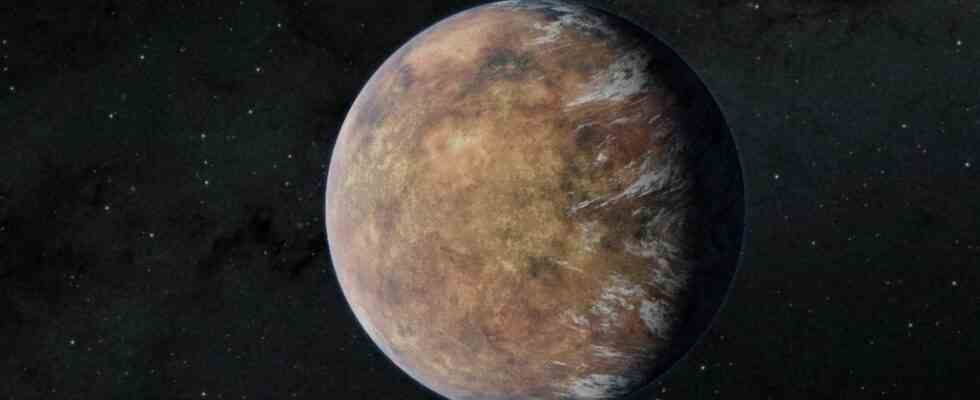Earth-like planet
Nasa discovers new exoplanet – there could be liquid water there
Artist’s rendering of the exoplanet TOI 700 e discovered by Nasa
© NASA
NASA has already discovered the second earth-like planet, a so-called exoplanet, in a solar system 100 light-years away. Liquid water may also exist there.
100 light-years separate us from the solar system in which TOI 700 e is located – an almost unimaginable distance. NASA recently discovered this exoplanet: It is similar in size to Earth and orbits the star TOI 700. TOI 700 belongs to the red dwarf stars, like about three quarters of all stars, and lies in the southern constellation Swordfish.
TOI 700 e is in the habitable zone, which means that liquid water may exist there. This is what makes the exoplanet so interesting for scientists, because should it actually find water on the surface of the planet, life forms that – in whatever way – resemble ours on earth would theoretically also be possible. Otherwise the surface is probably rocky, Nasa said in a blog post.
Greenland
The fading white – Nasa photos show how the northern world is melting away
Nasa has already discovered the fourth planet
In 2020, three other planets were discovered in the solar system with the help of the Tess space telescope: TOI 700 b, c and d. TOI 700 d is also an Earth-like planet orbiting in the habitable zone of the solar system. It is ten percent larger than the newly discovered planet. “This is one of the few solar systems known to us with multiple small planets in the habitable zone,” NASA study leader Emily Gilbert said of the latest discovery.
The researchers assume that all four discovered planets are gravitationally bound. That means they always turn the same side to their star. The innermost planet, TOI 700 b, has an orbital period of 10 days, at TOI 700 c it is 16 days. The now discovered exoplanet TOI 700 e orbits the star once in 28 days, TOI 700d needs 37 days according to NASA. The star will continue to be observed: “We look forward to the other exciting discoveries hidden in the data treasure chest of this mission,” said Nasa astrophysicist Allison Youngblood.
Source: NASA
James Webb telescope
Our new picture of the universe: The pillars of creation reveal secrets
Look in the photo gallery: Look where no one has been able to look before: The ten billion US dollar James Webb telescope is working as planned – to the delight of all astronomers on earth. His recordings change our view of the universe.

